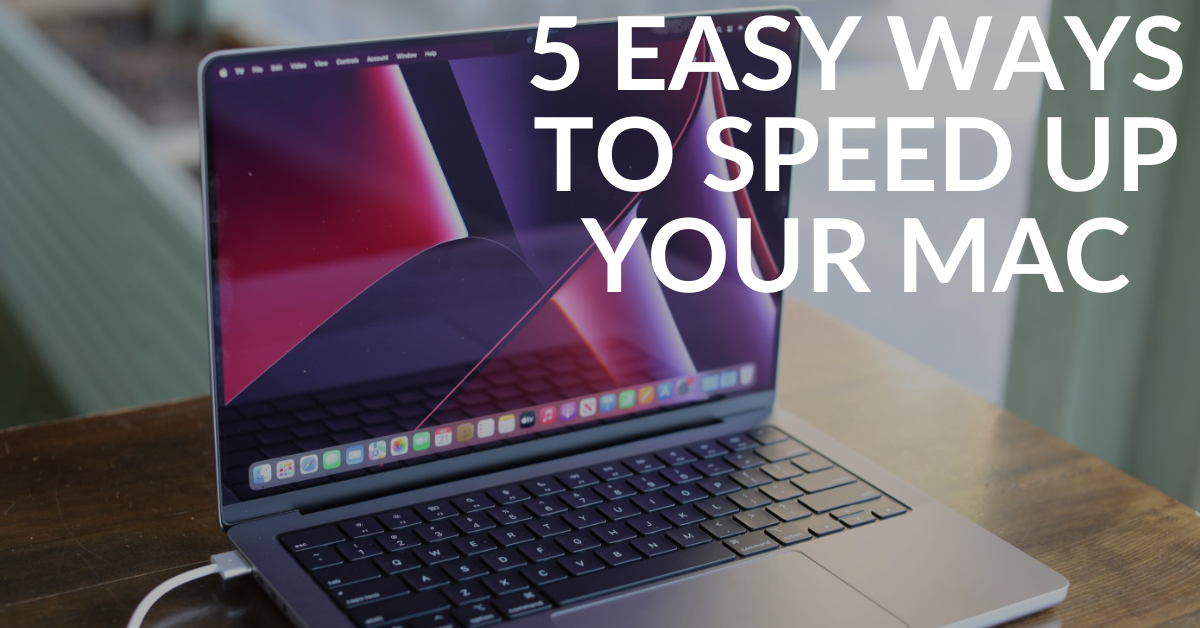Just like every other computing device, Macs slow down over time. Before you to decide you decide to get another device or take it out for repair, we have 5 easy ways to speed up your Mac.
5 Easy Ways to Speed up your Mac
1. Close All Unnecessary Apps
Our first recommended method to speed up your Mac is to close all unnecessary apps or programs. One way to identify running apps is to check the Dock at the bottom of your Apple screen. Running programs will have a dot underneath them which means the app isn’t fully closed. To ensure close an app:
- Open the app and make sure your work is saved
- Right-click the icon and select Quit
Alternatively, you can use the keyboard shortcut Command+Q to close the app.
If you Right-click, and you get a Force quit option that means the app is misbehaving and is probably slowing down your PC. If you don’t get the option to quit the app when you right-click you can do that by:
- Click the Apple logo at the top left corner of your screen
- Select Force Quit option
- Find the app that’s causing problem then click the Force Quit button
2. Free up storage space
Removing unnecessary apps and freeing up space can increase your MacBook performance, especially if your drive is nearly filled. If your drive is close to or out of capacity you will likely notice a drop in performance. The following are ways to free up space on your Mac:
1. Empty Bin/Trash: this can be done automatically by removing items in the Trash for more than 30 days. To empty the trash automatically, follow these steps:
- Click the Finder icon in the Dock at the top of your Apple screen
- Then select Preferences from the menu bar
- Click the Advanced tab
- Check the box for Remove items from the Trash after 30 days
2. iCloud Storage: store documents you don’t want to delete on iCloud to reduce the free-up space on your Mac. To store your documents in iCloud, follow these steps:
- Click the Apple logo at the top left corner of your screen
- Select System Preferences
- Select Apple ID in the upper right corner
- Click the Options button next to iCloud Drive
- Check the box for Desktop and Document Folders
- Click Done in the bottom right
3. Manage startup apps
If you have a lot of applications set to launch when you turn on your computer, it’s going to slow down your Mac to boot up. These apps might run in the background and use up the available resources. To stop apps from running when you start your MacBook, follow these steps:
- Click the Apple logo at the top left corner of your screen
- Select System Preferences, then click Users & Groups
- Go to Login Items
- Look through the list and remove the apps you don’t want to launch when you start your Mac
4. Check and Install Software Updates
If you’re running an older version of Mac OS there are chances that some apps might have compatibility issues. Apple is known for releasing software updates regularly that will help you boost your experience when using your Mac. To check for updates on your Mac:
- Click the Apple icon in the top-left corner of your screen
- Select System Preferences
- Select Software Update to see if there’s a macOS update
- Click the Update Now button if an update is available. Also, check the box for Automatically keep my Mac up to date for regular updates.
5. Turn off visual effects
Visual effects look attractive, but they can also be the cause of your MacBook running slow. To speed up your Mac, turn off these visual effects and animations. To change your Visual settings and effects:
- Click the Apple icon in the top-left corner of your screen
- Select System Preferences
- Then select Accessibility
- Click on the Display tab, and then check the box for Reduce motion

